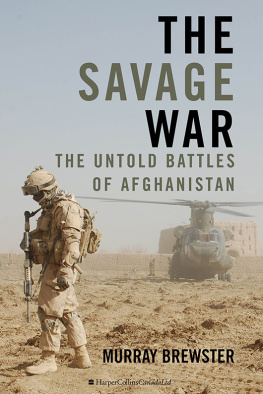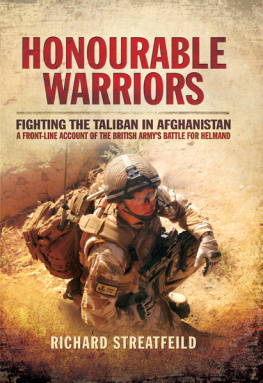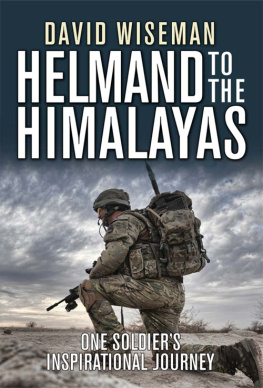FIGHTING
FOR
Afghanistan
FIGHTING
FOR
Afghanistan
A Rogue Historian at War
SEAN M. MALONEY
NAVAL INSTITUTE PRESS
Annapolis, Maryland
The latest edition of this work has been brought to publication with the generous assistance of Marguerite and Gerry Lenfest.
Naval Institute Press
291 Wood Road
Annapolis, MD 21402
2011 by Sean M. Maloney
All rights reserved. No part of this book may be reproduced or utilized in any form or by any means, electronic or mechanical, including photocopying and recording, or by any information storage and retrieval system, without permission in writing from the publisher.
ISBN 978-1-61251-399-7 (eBook)
The Library of Congress has cataloged the hardcover edition as follows:
Maloney, Sean M.
Fighting for Afghanistan : a rogue historian at war / Sean M. Maloney.
p. cm.
Includes bibliographical references and index.
1. Maloney, Sean M., date 2. Afghan War, 2001Personal narratives, Canadian. 3. Afghan War, 2001Campaigns. 4. SoldiersCanadaBiography. 5. HistoriansCanadaBiography. 6. Canada. Canadian Armed Forces. Princess Patricias Canadian Light Infantry. I. Title.
DS371.413.M35 2011
958.1047dc23
2011019897
 Print editions meet the requirements of ANSI/NISO z39.48-1992 (Permanence of Paper).
Print editions meet the requirements of ANSI/NISO z39.48-1992 (Permanence of Paper).
19 18 17 16 15 14 13 12 11 9 8 7 6 5 4 3 2 1
First printing
FOR
Joanne Morey
Ralph Lipoth
Brian OGrady
Laura Frye
and
Matthias Shulte

A teacher affects eternity;
he can never tell where his influence stops.
HENRY BROOKS ADAMS
CONTENTS
I n the summer of 2006, the Taliban and Al Qaeda mounted their most ambitious assault on the people of Afghanistan since their loss of power in 2001. Focusing their efforts on four provinces located in Operation Enduring Freedoms (OEFs) Regional Command South (RC South), the enemy initiated a desperate dual with Afghan, American, British, Canadian, Dutch, and other allied forces who were led by a Canadian brigade headquarters and supported by an American division headquarters. It was only through the perseverance, bravery, and flexibility of the soldiers in this coalition that disaster was averted.
Counterinsurgency war, as we have all been relearning since 2001, is a complex mechanism with numerous moving parts operating at many levels, not all of which are visible to the naked eye. In the case of the war in Afghanistan, it is futile to attempt to understand the essence of the war from solely a tactical or a strategic position. The tactical sometimes becomes the strategic; combat cannot be conducted outside the context of national development and (re)construction. The enemy never goes along with the program and rarely separates his operations into the neat packages that we use to describe the levels of war at Western military colleges. Similarly, it is difficult to describe the nature of counterinsurgency war in Afghanistan in a single volume because it has evolved from 2001 to 2010. Afghanistan is a demographically diverse and rugged country. The situation changes annually, even monthly. Midcourse adjustment is the norm. Organizationsand more importantly, peoplechange. Continuity is extremely difficult to achieve.
Fighting for Afghanistan operates from a specific vantage point. In order to capture those moving parts and how they interact, this book looks at the activities of Combined Task Force (CTF) AEGIS, led by Brigadier General Dave Fraser, and Task Force (TF) ORION, led by Lieutenant Colonel Ian Hope. CTF AEGIS was a Canadian-led multinational brigade headquarters that was responsible for five battalion-sized task forces. At the start of our story, only three of these task forces were deployed: a Romanian battalion that handled security for Kandahar Air Field (KAF), CTF AEGIS main base; an American battalion conducting counterinsurgency operations in Zabol province; and a Canadian battle group operating in Kandahar province. A British battle group and a Dutch battle group were in the process of deploying to the region when all hell broke loose. TF ORION, the Canadian battle group, occupied a central position in this drama both geographically, because Kandahar province is the center of the affected region, and operationally, because of how TF ORION was equipped, structured, and employed in the course of events.
CTF AEGIS and TF ORION deployed in JanuaryFebruary 2006, just after I left Kandahar where I had spent some time with the Provincial Reconstruction Team (PRT) observing its operations. As soon as I finished teaching my classes at Royal Military College that spring, I badgered the chief of the land staff, Lieutenant General Andy Leslie, and the commander of CTF AEGIS, Brigadier General Dave Fraser, to let me return. They bugged the commander of the newly established Canadian Expeditionary Forces Command, Lieutenant General Mike Gauthier, who agreed. Very soon I was on a plane back to KAF. This was an amazing stroke of luck. I arrived just at the time the enemy was escalating his operations. In addition, most of the media had gone home because the operational tempo appeared to be lower and the novelty of the Canadian deployment had fallen away.
My intent was to capture the brigadebattle group slice of the action: what it was like to fight in Afghanistan, how the two commanders envisioned the campaign, and what actually happened on the ground. I also wound up closely observing the tactical application of the plans on numerous occasions. Consequently, I spent the summer of 2006 observing operations from the Joint Operations Centre (JOC) at the CTF AEGIS headquarters all the way down to company level, when I joined A Company, 1st Battalion Princess Patricias Canadian Light Infantry (1 PPCLI), and followed them into the Battle of Pashmul. This book is based on my observations and experiences during that time.
Fighting for Afghanistan is the third book in an Afghanistan trilogy. Enduring the Freedom: A Rogue Historian in Afghanistan looks at the situation in the spring of 2003, and Confronting the Chaos examines the conflict in 2004 and 2005. These books are not intended to be a collective definitive history of the war in Afghanistan, but rather are intended to record what it was like during these times, how the war was fought, and what our peopleCanadians, Americans, Afghans, and othersaccomplished.
Some caveats. This work in no way represents the official views of any Canadian government agency or organization, nor those of any international organization or allynor would I ever want it to. Military operations are a human endeavor and by their nature extremely stressful. Not everybody gets along all the time. Every possible human behavior comes out under this level of stress. In some cases, people regret aggressive behavior toward others, bury the hatchet later, and move on. In other cases, they do not, and animosities fester that can have an impact on how events are interpreted. National pride plays a significant role in how these matters are handled, both publicly and privately, in the short and long terms. I was privy to this behavior on numerous occasions. It is not my intent to present a salacious expos of coalition or personal in-fighting. Understand that this happens on every coalition operation and has since warfare began. When I do discuss disagreements and frustrations, it is with the intent of capturing the facts on the ground and how they affected the situation as it was in play. My comments are not meant to pass some kind of universal judgment on the leaders involved. Mistakes get made. Clausewitz and Murphy wander all over the battlefield.





 Print editions meet the requirements of ANSI/NISO z39.48-1992 (Permanence of Paper).
Print editions meet the requirements of ANSI/NISO z39.48-1992 (Permanence of Paper).